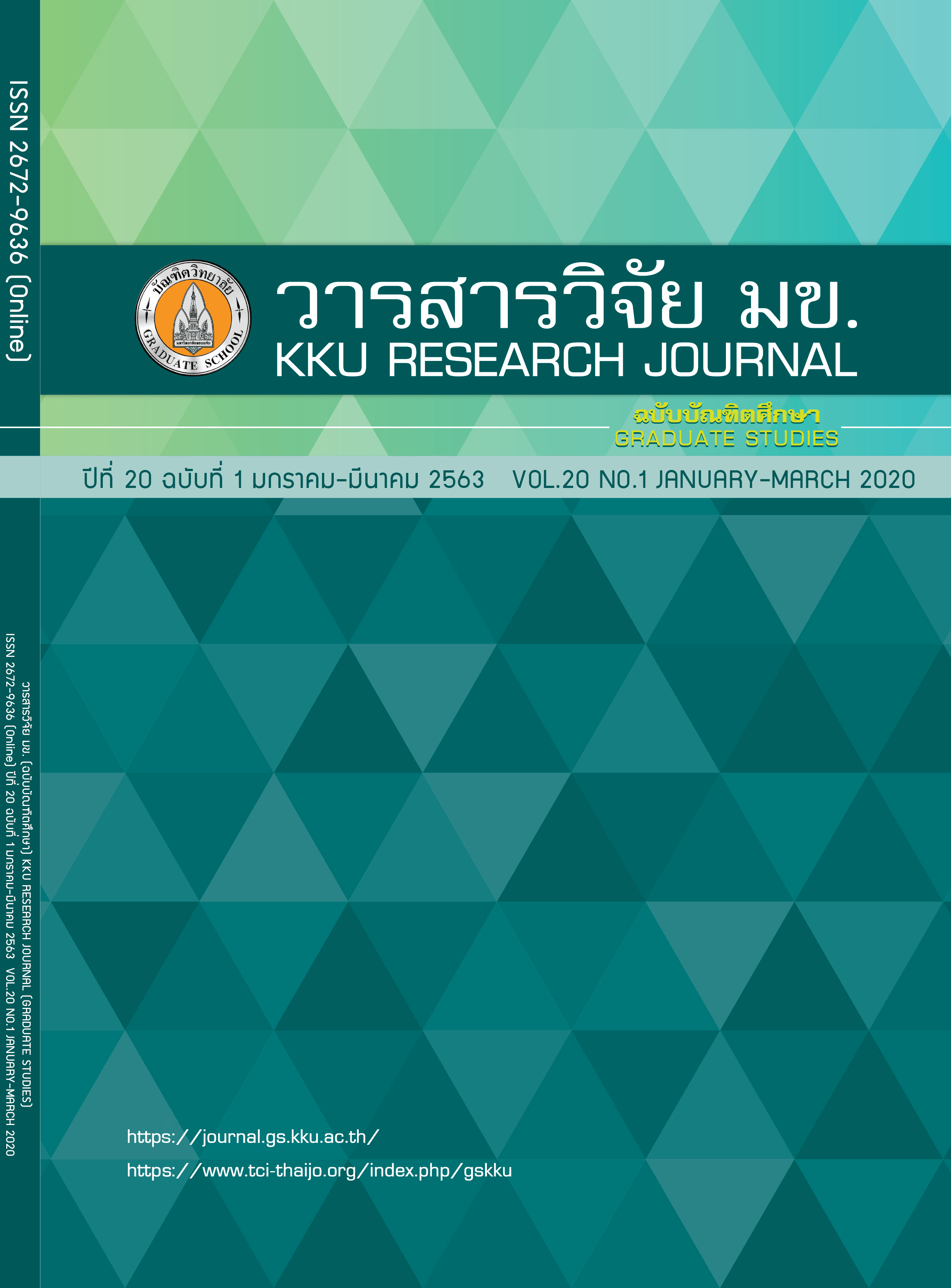Torrefaction of Pelletizing Fuel from Solid Waste of Sugar Industry
Keywords:
Pelletizing fuel, Filter cake, TorrefactionAbstract
This research aimed to study the torrefaction of pelletizing fuel from filter cake as solid residue in sugar industry. To obtain the cylindrical fuel pellets (1 cm in diameter and 1.25 cm in length), the filter cake was compressed at 30 bar and then torrified at 200–350oC for 0.5–2 hr. With the rise of torrefaction temperature and time, our characterization results showed that the product yield, pellet density, bulk density and compressive strength decreased, whereas the heating value noticeably increased due to the fact that the torrified pellet provides higher carbon content that act as energy source than the non-torrefied one. However, by investigating all properties of torrified pellet when the torrefaction temperature and time changed, the effect of temperature showed a greatly significant parameter than time. The heating values of torrified pellet was 16–30 MJ/kg, which is consistent to others reported in the literatures. Therefore, filter cake has shown a great potential as raw material for production of fuel pellets and this thermal process can also be applied to produce higher quality fuel derived from sugar industry
References
Supoj D. Study on Potential and Efficiency of the Mixture of Briquettes from Sugar Industrial Sludge and Bagasse. [MSc thesis]. Bangkok: King Mongkut's University of Technology Thonburi; 2003. Thai
Office of the cane and sugar board. Annual report 2016. Bangkok: Thailand; 2016.
Sudhakar J, Vijay P. Control of Moisture Content in Bagasse by Using Bagasse Dryer. International Journal of Engineering Trends and Technology. 2013; 4: 1331–1333.
Nara P. The Biomass Pellet Standardization Project to Develop as a Biomass Fuel for the Future. Bangkok: Thailand; 1998.
Stelte W, Nielsen NK, Hansen HO, Dahl J, Shang L, Sanadi AR. Reprint of: Pelletizing properties of torrefied wheat straw. Biomass and Bioenergy. 2013; 53: 105–112.
Cao L, Yuan X, Li H, Li C, Xiao Z, Jiang L, Huang B, Xiao Z, Chen X, Wang H, Zeng G. Complementary effects of torrefaction and co-pelletization: Energy consumption and characteristics of pellets. Bioresource Technology. 2015; 185: 254–262.
Heidari A, Younesi H, Rashidi A, Ghoreyshi A. Adsorptive removal of CO2 on highly microporous activated carbons prepared from Eucalyptus camaldulensis wood: Effect of chemical activation. Journal of the Taiwan Institute of Chemical Engineers. 2014; 45: 579–588.
Manouchehrinejad M, Mani S. Torrefaction after palletization (TAP): Analysis of torrefied pellet quality and co-products. Biomass and Bioenergy. 2018; 118: 93–104.
Stelte W, Clemons C, Holm JK, Sanadi AR, Ahrenfeldt J, Shang L, Henriksen UB. Pelletizing properties of torrefied spruce. Biomass and Bioenergy. 2011; 35: 4690–4698.
Shang L, Nielsen NPK, Dahl J, Stelte W, Ahrenfeldt J, Holm J K, Thomsen T, Henriksen UB. Quality effects caused by torrefaction of pellets made from Scots pine. Fuel Processing Technology. 2012; 101: 23–28.



